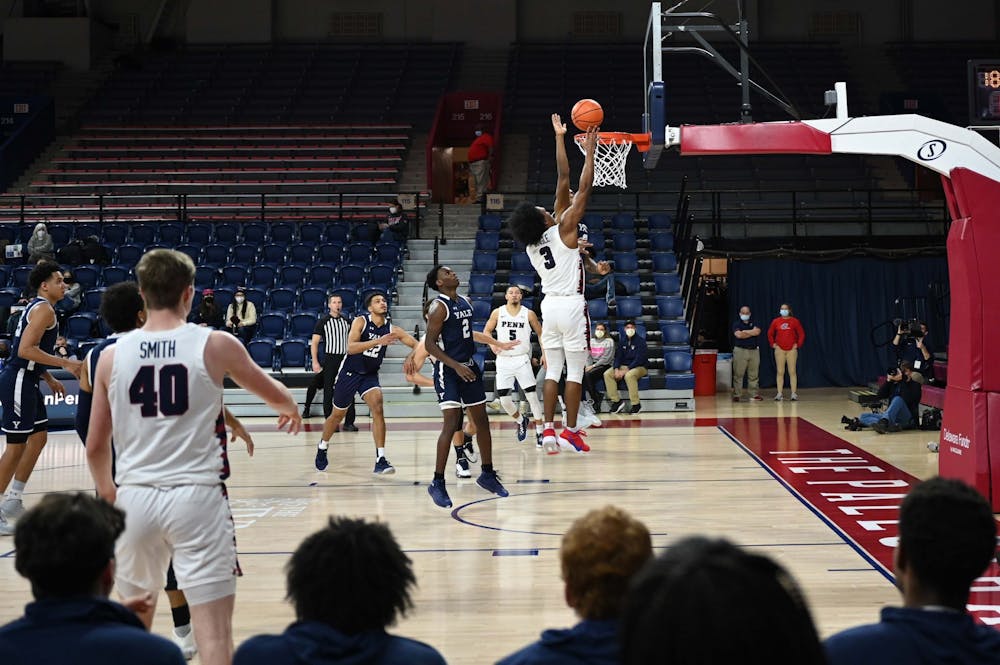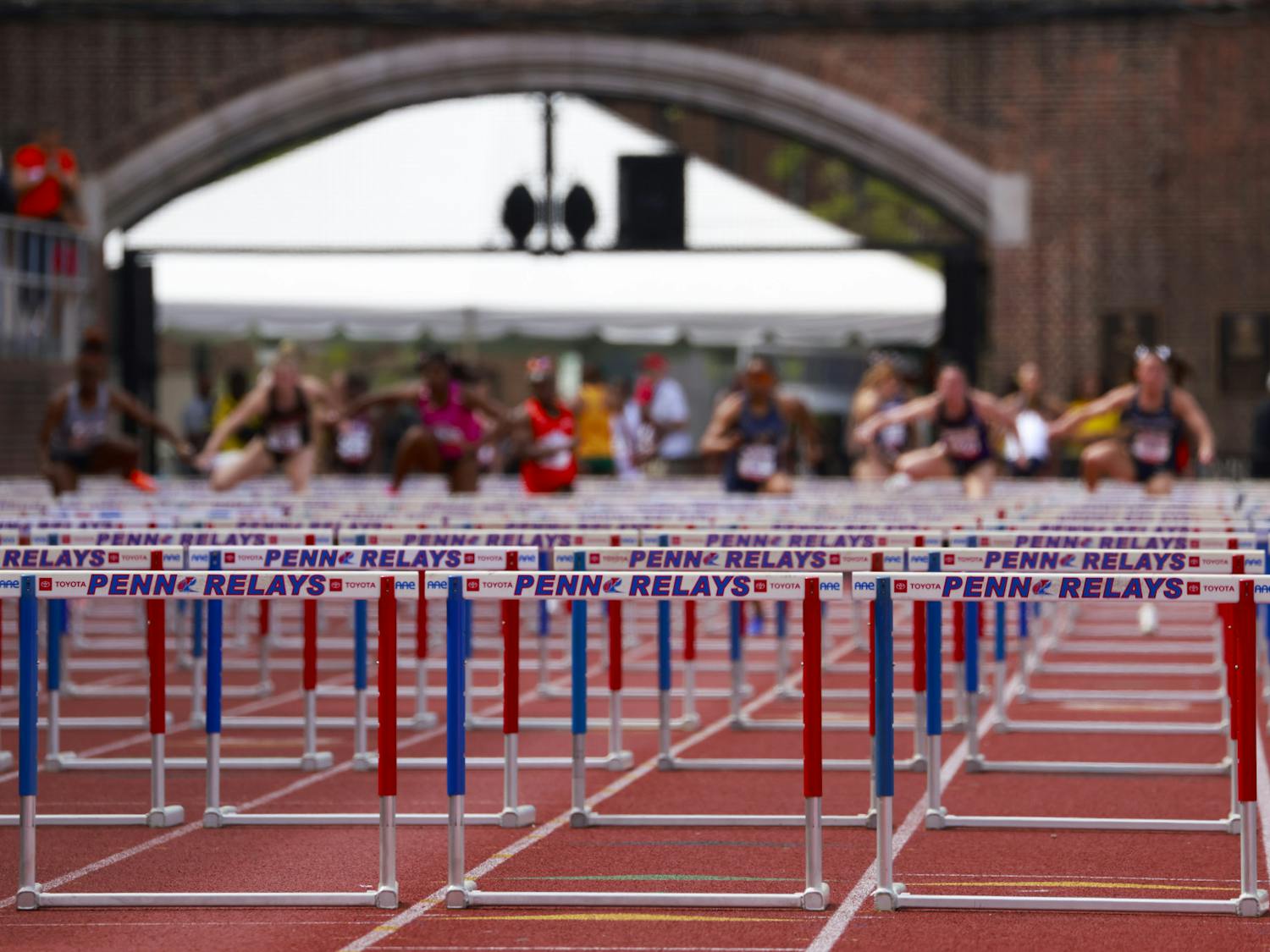For much of the season, Penn men’s basketball seemed to be pressing on offense. On Saturday afternoon at the Palestra, sophomore guard — and recent Ivy League Player of the Week winner — Jordan Dingle debuted a new hairstyle and a new offensive identity as Penn took down the Yale Bulldogs 76-68 in what marked the team's most complete performance of the season.
The theme for the Quakers this year has been potential. With the loss of six of the team's nine rotation players from the 2019-20 season, previous columns outlined the obvious talent on Penn’s roster, but the team's lack of experience produced an up-and-down start to the year.
As the team made the transition to Ivy League play, this trend of inconsistency continued. A crucial win over Brown looked to set the Quakers on the right path, but just one week later, the Red and Blue dropped a game to Columbia, the consensus worst team in the Ancient Eight.
The cause of these struggles? A lack of offensive consistency and an overreliance on three-point shooting. Watch Penn for much of the year and this pattern is obvious — the team often struggled to create looks inside and was forced to settle too often for contested attempts from beyond the arc. This generates a worrying trend, the Quakers are ranked 66th in the nation in threes attempted but are ranked just 139th in three-point percentage. It comes as no surprise, then, that entering Saturday the Quakers were just 2-10 in games where they shot less than 40% from three. When the shots don’t fall, the Red and Blue don’t seem to have an answer.
How, then, did Penn manage to take down the preseason Ivy League favorite while having their worst three-point shooting performance of the season? By going back to what they do best. Look back at the highlights from any of Penn’s key wins in the previous four seasons. The key to the team's offense was not three-point shooting but cutters getting to the basket and creating open looks at the rim. This strategy not only consistently generates high-percentage looks in the paint, but also puts pressure on the inside of the defense, producing open shots from three.
This made Saturday’s performance a sight for sore eyes, as the Quakers sliced and diced Yale for 76 points despite making just five three-pointers. Implementing this style was never going to be easy. Timing cuts and passes requires a tremendous amount of experience and trust between teammates, which takes time to develop. AJ Brodeur, Penn basketball’s all-time leading scorer, who mastered this offense, was a four-year starter in the system. These young Quakers are only starting to flash their potential.
Beyond that, changes in personnel require a different approach. With Brodeur anchoring the frontcourt, Penn was able to largely run its offense out of the post. This season, the Quakers are led by perimeter guard Jordan Dingle, requiring a new approach to getting guys open. Dingle has occasionally struggled with this new role as the offensive focal point, scoring just 10 points per game in the Quakers' three games heading into the matchup with Yale.
Fortunately for the Quakers, Dingle rose to the occasion on Saturday. While the three-point ball wasn’t falling — Dingle shot just 1-8 from deep — he was electric when driving to the basket. He ended the evening with 31 points, including 16 in the game’s final eight minutes. Dingle’s ability to get into the lane created opportunities not only for himself but for cutters like freshman guard George Smith and junior forward Michael Moshkovitz to get open underneath. On the second unit, it was much of the same, but with sophomore guard Clark Slajchert — who just was awarded Ivy League Rookie of the Week — running the show. For the first time all season, the Quakers looked confident in their offensive game plan every time they came down the floor. Work the ball inside with dribble penetration, take a layup or find a cutter or spot-up shooter.
RELATED:
Salas | Ivy League women's basketball power rankings
Men's basketball protects lead to the final minute in win against Yale
It remains to be seen if Penn will be able to carry its offensive momentum from Saturday through the rest of Ivy League play, but its 19% three-point percentage in the game suggests the Red and Blue are only scratching the surface of their offensive potential. It might not have seemed like it at the start of the year, but with a rejuvenated Jordan Dingle and a focus on working the ball into the paint, the Quakers could be legitimate contenders in the Ivy League.
Another good test in Harvard awaits the team this week as the Crimson appears to be a strong contender for a spot in the Ivy League tournament. I’m excited to see if the offense keeps its flow going.
Jacob Wessels is a College senior from Wayne, Pennsylvania studying economics. He can be reached at dpsports@thedp.com.









